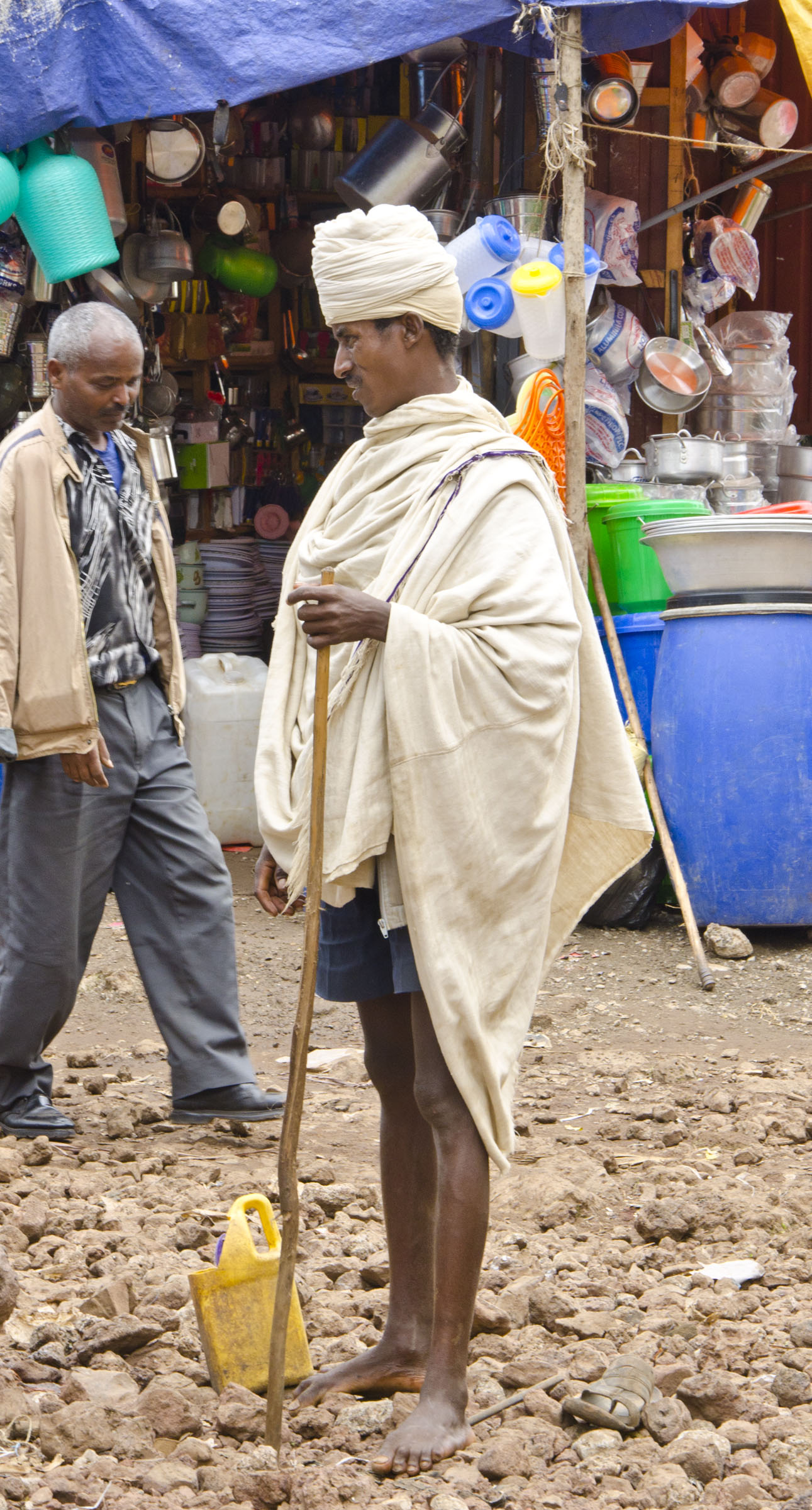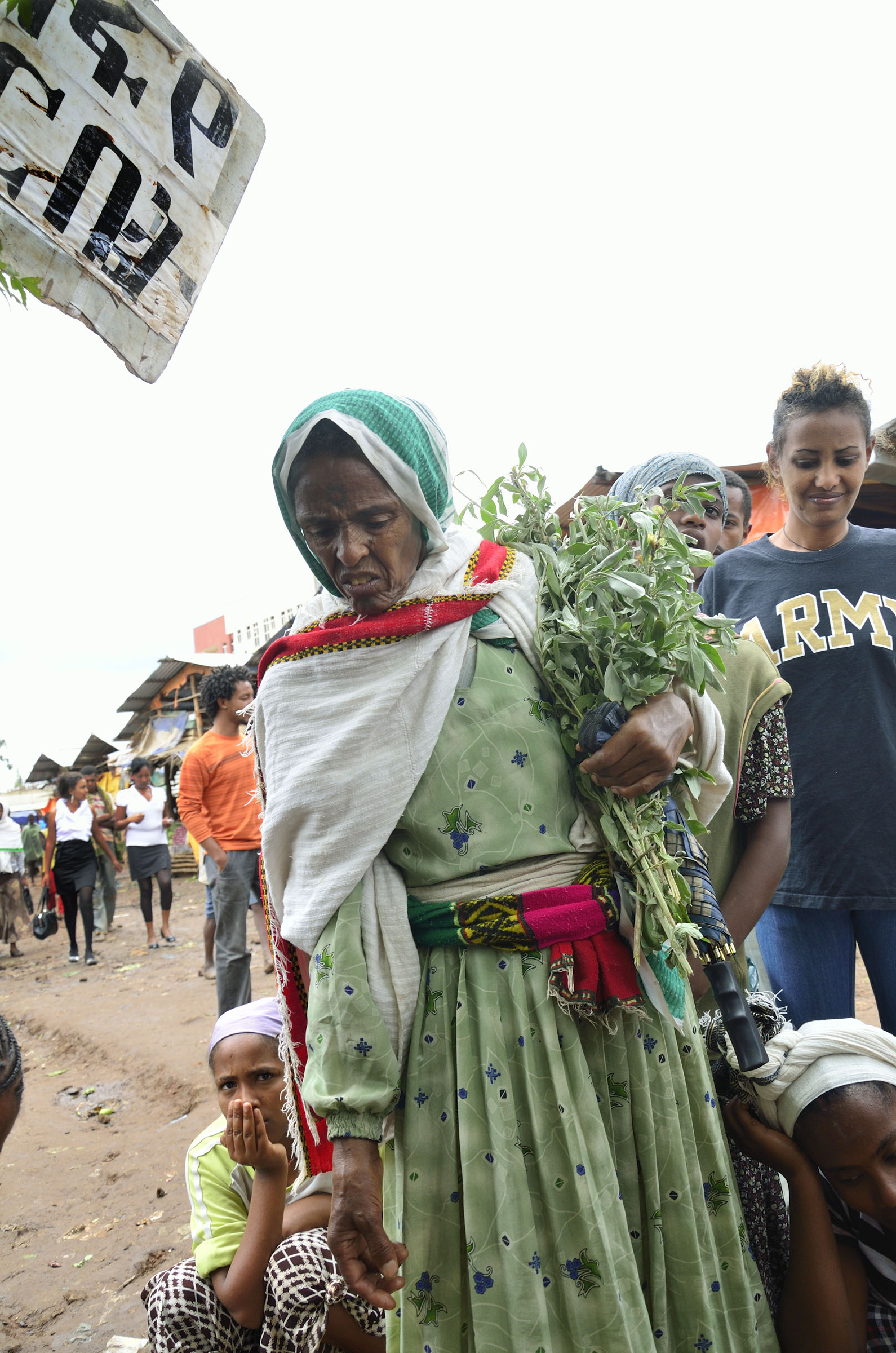This was sold to me as a lake side retreat with lovely gardens and great food. That is not inaccurate but does not tell the whole story. Bahir Da is on the shores of Lake Tana – which is the size of a small sea really. The hotel is on the outskirts of the town with a main road roaring by and the usual collection of shoe shine boys, souvenir sellers etc outside the gate. If you gave this hotel one star you would be extremely generous. It is on the shores of the lake but is surrounded by a seven foot high corrugated iron fence so you can’t see the lake. The gardens are lovely apart from the serious lack of weeding and the addition of empty beer cans, plastic bottles etc. The bird life is spectacular, exotic and tame. Which makes me feel a little less annoyed about forgetting my binoculars as they are so close I don’t really need them.
As we approach the outside restaurant area which is a huge thatched roof built round an enormous tree I can hear the conversation from a table of English people. The man is saying something along the lines of ‘I think it is absolutely bloody outrageous. Imagine if back in England we raised the price whenever a black man tried to buy something’. This was referring to the fact that everything in Ethiopia has a local price and a foreigner price – which incidentally is to do with nationality not skin colour. Rebecca who is 100% Ethiopian sometimes failed to get the local price because if she didn’t have papers to prove she was Ethiopian they suspected here of being a tourist – which I suppose she is! They did not suspect her of being white for obvious reasons. I wanted to go and tell the man what a twat he was and ask him if he had ever compared what international students pay in the UK compared with residents. Besides which this price difference usually amounts to foreigners paying £1:50 for something whilst locals pay 50p which I agree is a large percentage but we are talking about £1 here! If the locals were charged £1:50 they could not afford it. OK I will shut up.
Anyway we decide to stay at the hotel which charges £12:50 for a double room. Some rooms are better than others. Our first one is extremely damp and dirty and the bathroom is covered in mould and although there is hot water we cannot get it to come out of the shower head. The bathroom is thick with mosquitoes – big hungry ones and a huge spider in the sink which I re-home in the garden. There is a TV though and electricity – sockets hanging off walls, bare wires in the bathroom. So we get another room which is marginally better and at least the sheets don’t feel damp. We replace the mosquito net which is full of holes with our own and get a reasonable nights sleep. The gaffer here is a bit of a character who runs the operation from his mobile with a permanently attached bluetooth headset. He deals with any complaints swiftly and fiercely – I think the staff are terrified of him. So am I.
We stayed two nights at this hotel – which despite everything I would still recommend for the location and ambience. On the first morning we walked to the market. A huge muddy space with open drains criss-crossing it and dozens of dirty, cheeky children. Sacks and sacks of tef, chickpeas and other pulses and grains. Many of the sacks are stamped UN Aid – Not for Re-Sale. Though it may be just the sacks that are being re-used. The local birds – a collection of many bright yellow weaver birds and other exotic feathered specimens – seem to have permission to sit on the sacks and eat as much as they want and in return only leave the occasional poo. Other stalls sell coffee pots, cooking pans made from old tins, clothes, shawls, vegetables, spices and injeera baskets. Bizarrely lots of stalls seem to be selling Sainsbury and Tesco bags for life. As usual we attract lots of children who follow us round and a fair few adults too who want to sell us stuff or have their photos taken or just try out their English.
In the afternoon we hire a boat and pilot to take us over to a monastery on an island – with a brief diversion to see the hippos. There are three of them and they pop their heads up at regular intervals to eyeball us. We don’t go too close. Surprisingly hippos are very aggressive towards humans and boats and will often attack without warning. They are also very fast on land and in the water. I have heard it said that hippos cause more deaths in Africa than any other wild animal (though I presume this does not include mosquitos). Anyway I manage to grab a few shots which blow up reasonably well.
The monastery is a very typical Ethiopian attraction – very interesting and ancient but in a woeful state of repair and with precious artefacts given no protection from the elements. Here there are centuries old illustrated manuscripts and priest’s robes in open fronted cabinets in a tin shack. It is difficult to see anything in the monastery as there are no lights but at least that will help to stop the wall paintings from fading. We return to our boat, passing a huge number of locals on a papyrus boat which is practically underwater from the load. It starts to really lash it down on the way back and the water gets choppy. I am pleased Rebecca insisted on seeing the life jackets before we left – but they won’t save us from the hippos…..
One other thing about this place – the monks in another nearby monastery chant for many hours a day – which I suppose is common practice among monks. But these ones amplify their efforts so you can hear them for miles around. I quite enjoyed it but when we visited the posh hotel next door I noticed that someone had written in the guest book that it was an outrageous imposition on his holiday and if they expected him to stay there again it would have to be stopped. Those who know me will know that I am a confirmed atheist and generally pretty intolerant of any religious mumbo-jumbo. But one of the few redeeming factors for me is the wonderful music, buildings and artworks produced in the name of religion. Ethiopia has these things in cups.











